Abstract
Cells from lymph nodes or spleen, or peripheral blood leucocytes of immunized guinea-pigs were cultured in the presence of antigens or phytohaemagglutinin. Significant incorporation of tritiated thymidine occurred in a variable proportion of the experiments with lymphocytes from each of the three sources. Cells taken from animals that had been immunized with sheep erythrocytes with adjuvant, and which showed strong delayed hypersensitivity, and from animals immunized intravenously with sheep erythrocytes, which failed to show delayed hypersensitivity reactions, both responded to sheep erythrocytes in vitro.
Cells from guinea-pigs immunized with complete Freund's adjuvant alone, which showed strong delayed hypersensitivity to tuberculin PPD, gave more positive responses in vitro than did cells taken from animals which received an intravenous injection of tuberculin PPD before the adjuvant. These animals showed no or weak delayed hypersensitivity reactions (immune deviation).
The immunological significance of the in vitro proliferative reaction is discussed.
Full text
PDF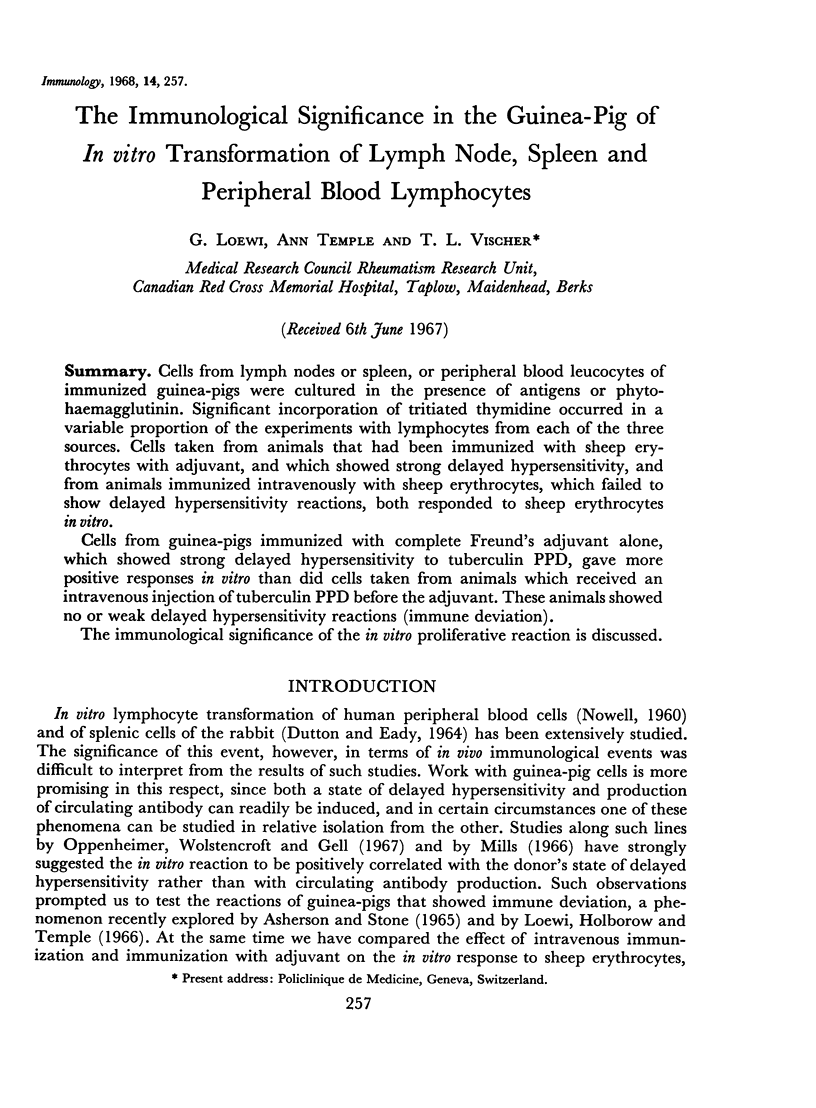
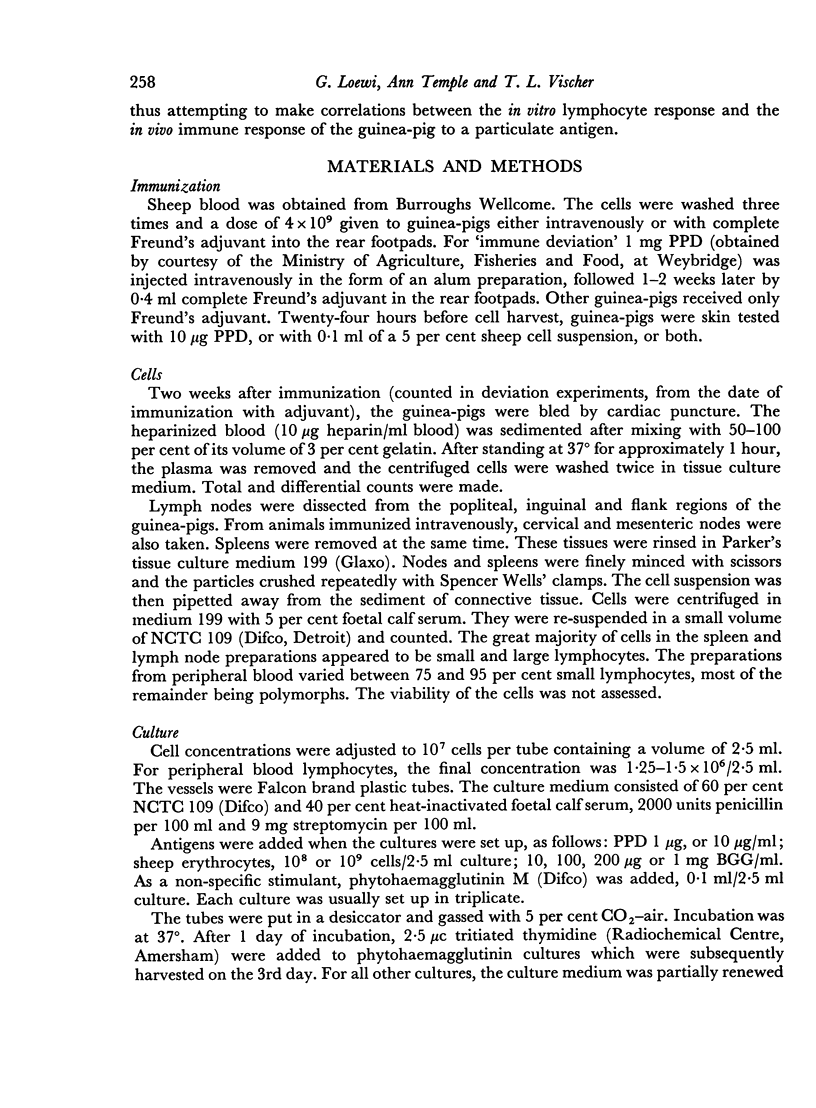
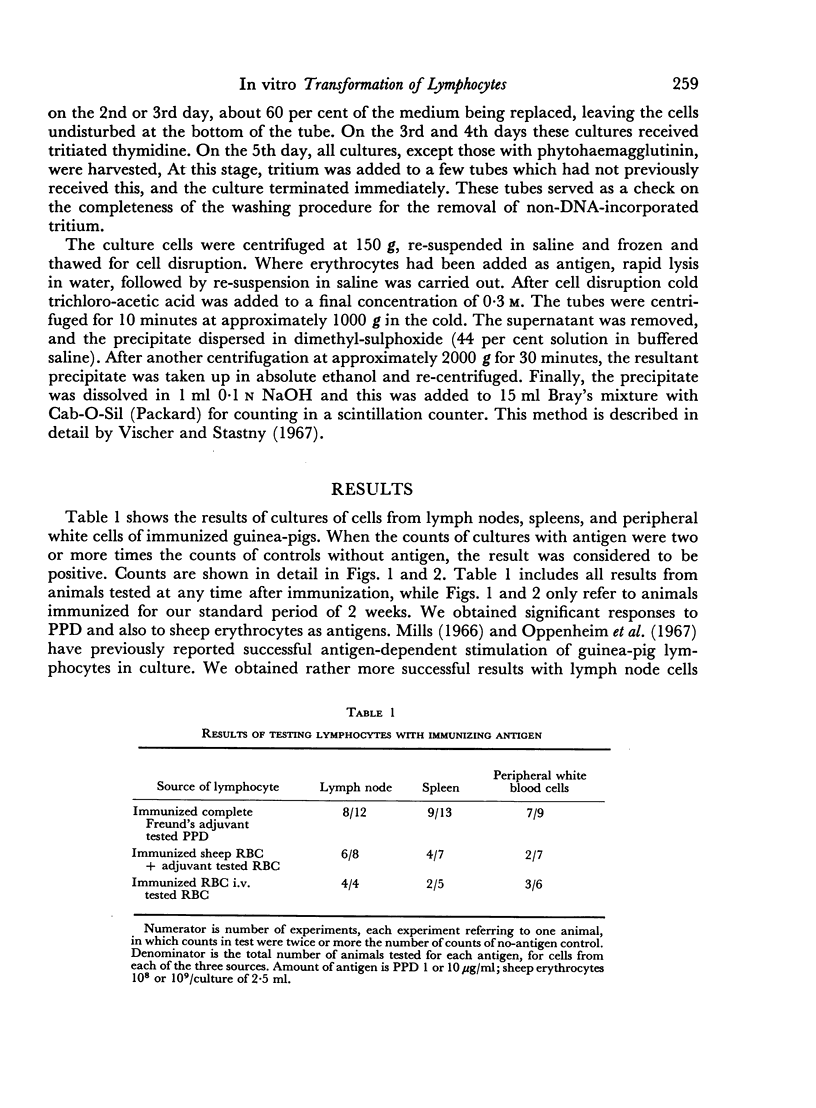
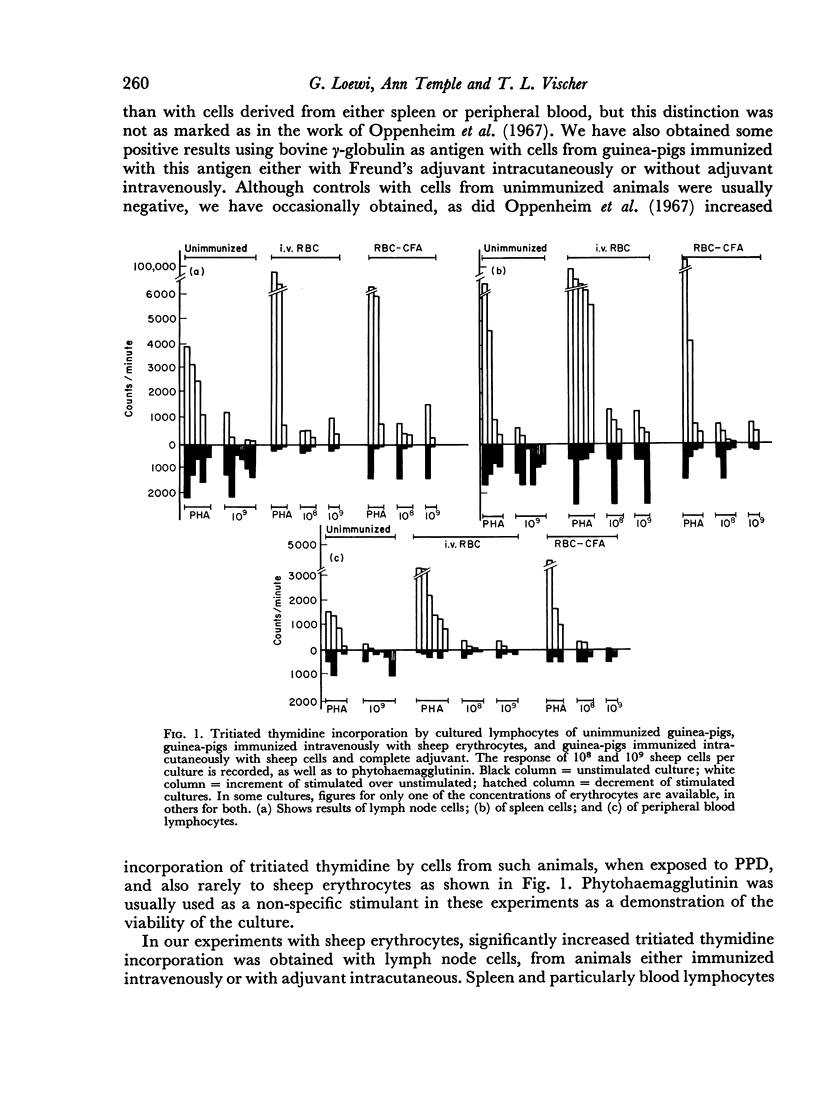

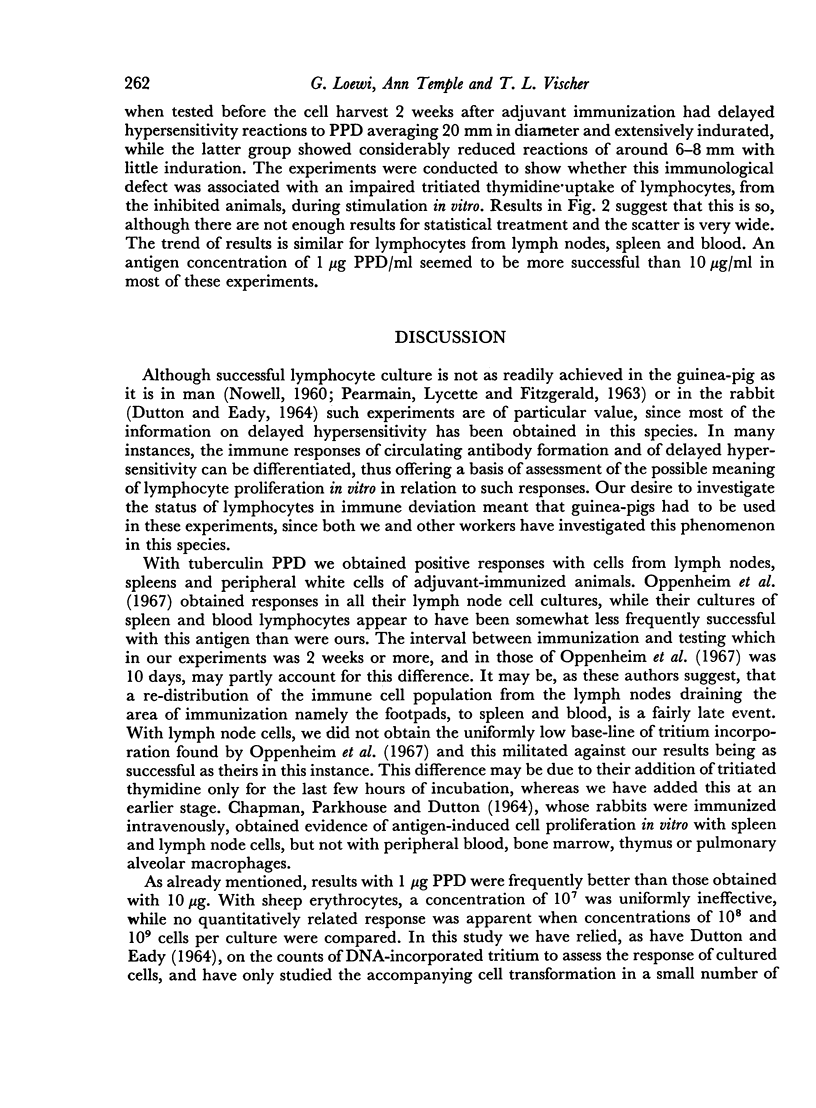
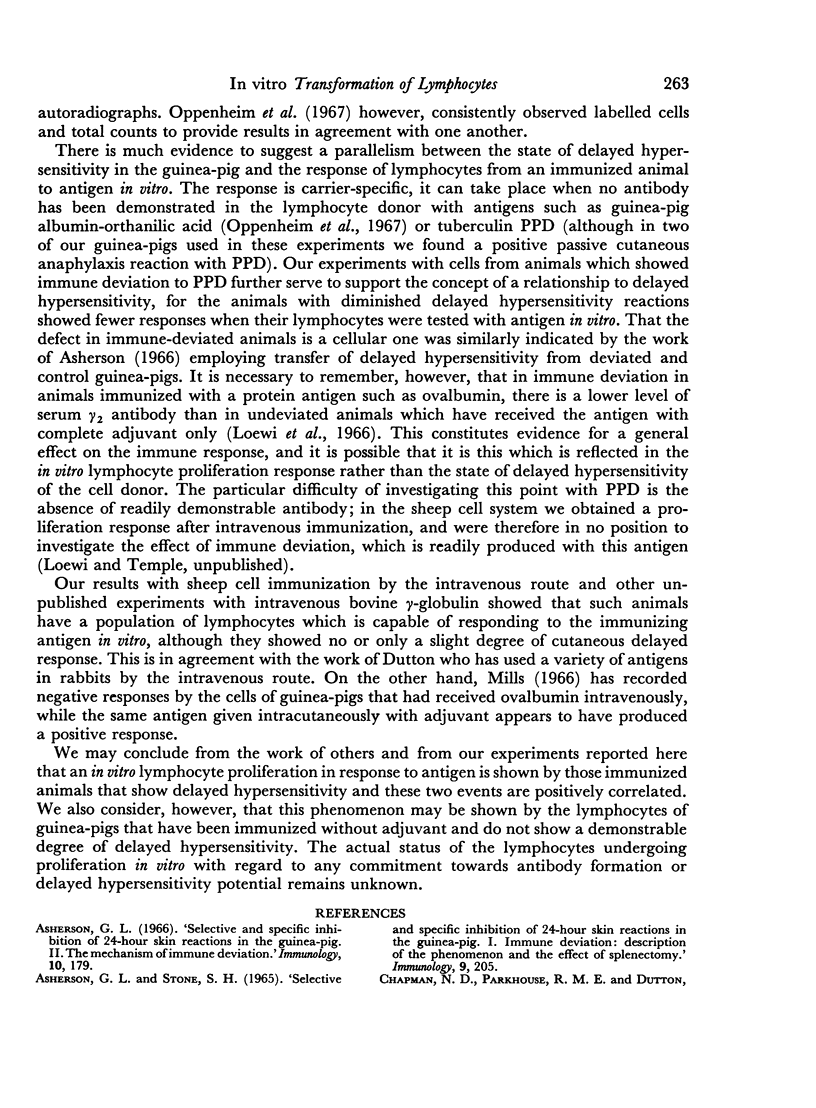
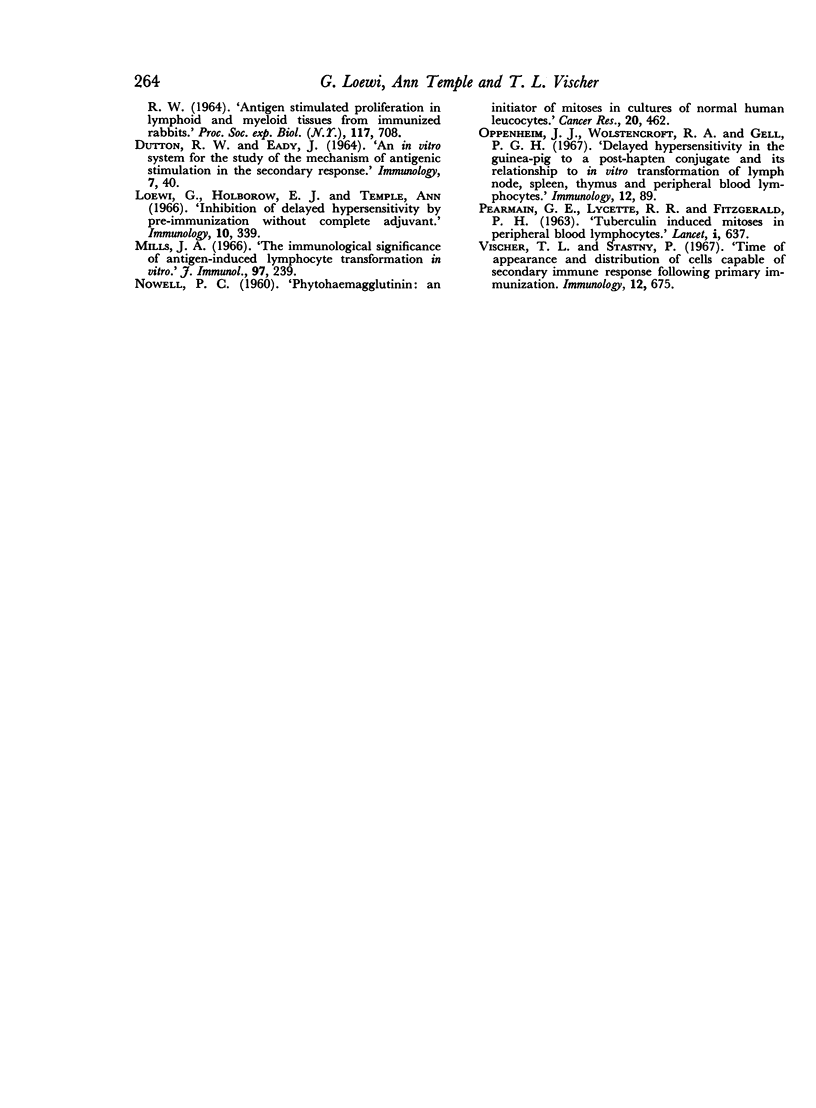
Selected References
These references are in PubMed. This may not be the complete list of references from this article.
- Asherson G. L. Selective and specific inhibition of 24-hour skin reactions in the guinea-pig. II. The mechanism of immune deviation. Immunology. 1966 Feb;10(2):179–186. [PMC free article] [PubMed] [Google Scholar]
- Asherson G. L., Stone S. H. Selective and specific inhibition of 24 hour skin reactions in the guinea-pig. I. Immune deviation: description of the phenomenon and the effect of splenectomy. Immunology. 1965 Sep;9(3):205–217. [PMC free article] [PubMed] [Google Scholar]
- DUTTON R. W., EADY J. D. AN IN VITRO SYSTEM FOR THE STUDY OF THE MECHANISM OF ANTIGENIC STIMULATION IN THE SECONDARY RESPONSE. Immunology. 1964 Jan;7:40–53. [PMC free article] [PubMed] [Google Scholar]
- Loewi G., Holborow E. J., Temple A. Inhibition of delayed hypersensitivity by pre-immunization without complete adjuvant. Immunology. 1966 Apr;10(4):339–347. [PMC free article] [PubMed] [Google Scholar]
- Mills J. A. The immunologic significance of antigen induced lymphocyte transformation in vitro. J Immunol. 1966 Aug;97(2):239–247. [PubMed] [Google Scholar]
- NOWELL P. C. Phytohemagglutinin: an initiator of mitosis in cultures of normal human leukocytes. Cancer Res. 1960 May;20:462–466. [PubMed] [Google Scholar]
- Oppenheim J. J., Wolstencroft R. A., Gell P. G. Delayed hypersensitivity in the guinea-pig to a protein-hapten conjugate and its relationship to in vitro transformation of lymph node, spleen, thymus and peripheral blood lymphocytes. Immunology. 1967 Jan;12(1):89–102. [PMC free article] [PubMed] [Google Scholar]
- PEARMAIN G., LYCETTE R. R., FITZGERALD P. H. Tuberculin-induced mitosis in peripheral blood leucocytes. Lancet. 1963 Mar 23;1(7282):637–638. doi: 10.1016/s0140-6736(63)91275-3. [DOI] [PubMed] [Google Scholar]
- Vischer T. L., Stastny P. Time of appearance and distribution of cells capable of secondary immune response following primary immunization. Immunology. 1967 Jun;12(6):675–687. [PMC free article] [PubMed] [Google Scholar]


